[iPhone]
 The Most Powerful Tequila App Ever Created for the iPhone: Tequila Matchmaker
The Most Powerful Tequila App Ever Created for the iPhone: Tequila Matchmaker
[/iPhone]
[android]
 The Most Powerful Tequila App Ever Created for Android: Tequila Matchmaker
The Most Powerful Tequila App Ever Created for Android: Tequila Matchmaker
[/android]
Additives in tequila? I bet you’ve never thought about it. But whether you are for or against additives it’s useful to know how they are used, the rules that govern them, and how to sleuth them out.
 We asked Sergio Mendoza, of Don Fulano Tequila, and Clayton Szczech, of Experience Tequila, to talk about the use of additives in tequila. (See the video at the bottom of this story to hear their discussion on additives, shot in the laboratory at the Tequileña distillery (NOM 1146), where Don Fulano is made.)
We asked Sergio Mendoza, of Don Fulano Tequila, and Clayton Szczech, of Experience Tequila, to talk about the use of additives in tequila. (See the video at the bottom of this story to hear their discussion on additives, shot in the laboratory at the Tequileña distillery (NOM 1146), where Don Fulano is made.)
First off, the use of additives in tequila is completely permitted under the rules (Norma) governing tequila production, but there are a few caveats.
The rules state that a producer can use additives, and this does not need to be disclosed on the label, as long as it does not exceed 1% of total volume. Otherwise, it must be labeled as a “licor” or a “crema.”
When additives are used, there is no requirement to notify the end consumer, as long as the amount added does not exceed 1% of total volume. For this reason, brands that put additives into their product will often make claims that they are not using any at all. Although this is perfectly legal, it is a bit dishonest.
And, as of February, 2013, the NORMA Oficial Mexicana banned the use of additives in blanco tequilas.** (Thanks to Clayton Szczech for providing such a detailed explanation.)
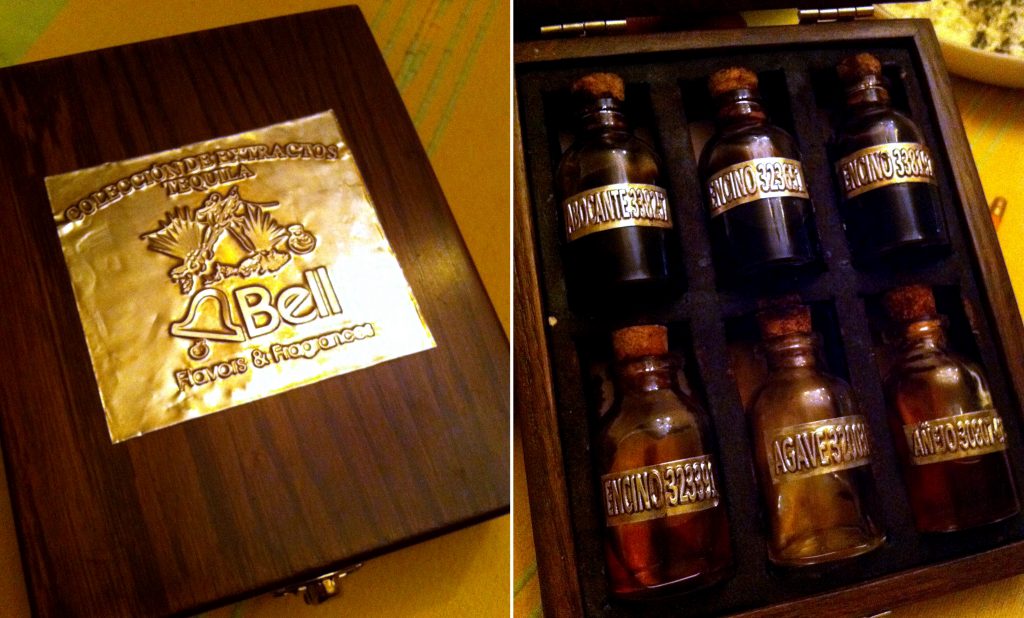 This is a sample kit from Bell Flavors & Fragrances, one of the largest suppliers of additives for use in tequila.
This is a sample kit from Bell Flavors & Fragrances, one of the largest suppliers of additives for use in tequila.
There are 4 types of additives allowed by law for use in 100% agave, non-blanco tequilas:
1. Sugar-based Syrup
Syrup, or “jarabe”, is a mixture of different ingredients, primarily for the purposes of creating a sweeter product. Agave nectar, corn syrup, cane sugar, aspartame, sucralose (Splenda), and stevia could all be used as a sweetening agent for tequila. The jarabe can also contain natural fruits and herbs to add aromas and flavors, too.
2. Glycerin
Glycerin is a natural byproduct of fermentation and distillation. Additional glycerin can be added in order to create a more rounded mouth feel. It is one of the most common additives used in tequila. It makes a tequila that is “thin” or watery feel fuller and thicker in your mouth.
3. Oak Extract
This adds aromas and flavors found in an oak barrel to the finished product. When using oak extracts, it’s possible to make a tequila smell or taste as though it is aged longer than it actually was.
4. Caramel Color
Used primarily for the purposes of adding color to the finished product. Caramel coloring has a mildly bitter taste, and is used for aesthetic purposes.
Additives are used at the end of the process, and are generally meant for rectification and to maintain consistency between batches. But they can also be used to cover up mistakes, or mask deficiencies in the final product.
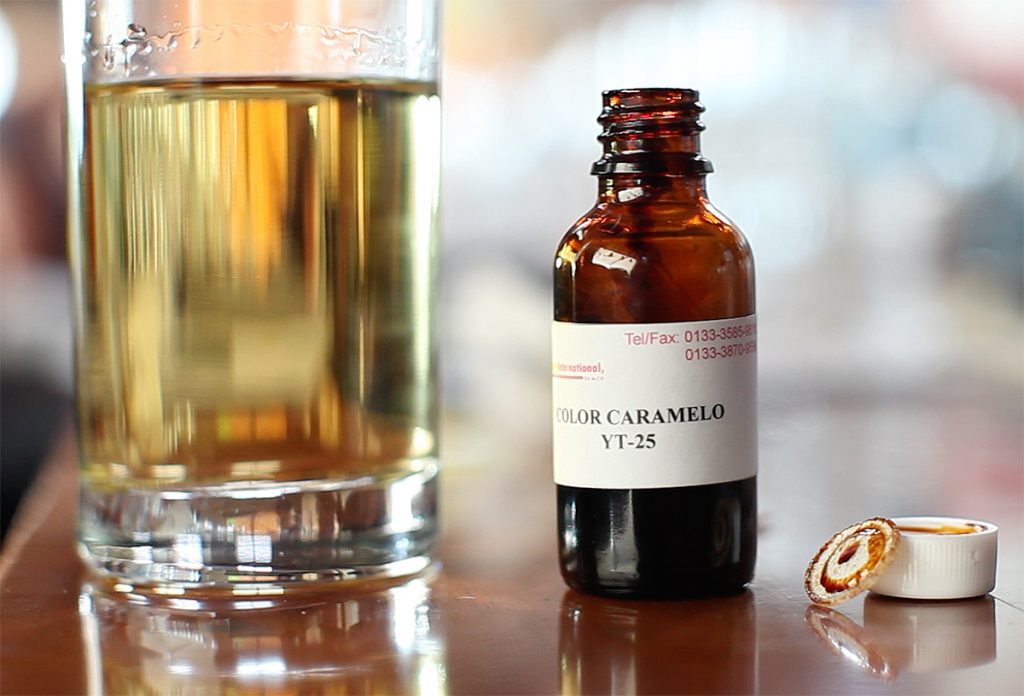
Additive makers, such as Bell Flavors & Fragrances, are able to replicate aromas and flavors in a very sophisticated way. The Norma allows for 1% by volume, so the additives have become very concentrated and intense compared to additives used many years ago when the 1% rule was established.
As a test of just how capable these additives can be, we used the sample kit (photo, above) to turn a blanco tequila into an “añejo” using just a toothpick. By dipping it into the additive sample bottle and adding one drop at a time to a 2-ounce pour, we were able to make it darker, sweeter, and smell and taste like a charred oak barrel within about a minute. The result was a passable “aged” tequila that could easily fool most experienced tequila drinkers.
[Turning a blanco into an aged product without the use of barrels and time is against the rules, and we are not suggesting that any brands are actually doing this.]
Additives used in tequila can be difficult to detect when used in a subtle way. However, many producers tend to go overboard, and build their flavor profile by relying heavily on the use of additives. These can become obvious because the aromas and flavors are very prominent, and dominate the drinking experience.
“I always describe them as transparent,” Mendoza said about naturally-occurring aromas and flavors. “You feel them, but you can kind of go through them.”
“When you have a product with added flavors, they’re kind of in-your-face. You hit them and you cannot go through them. They are too evident,” he said.
“If you taste many different tequilas from many different producers, you sort of develop a facility of what the natural range of aromas and flavors are,” Szczech said. “When you taste something that is completely outside of that, that’s sort of a red flag for me.”
“The only way to really get into it is by tasting a lot of tequilas,” Mendoza said. “You start to understand what the real flavors of the plant, or the process, of the yeast, of the fermentation, even of the soil of the region. It starts becoming quite evident when flavors are imposed into the product.”
Here are a few signs that additives are in use: if a tequila is extremely sweet, or smells like cake batter, cotton candy, fake fruit, or tutti-fruity candy. These are not aromas and flavors that occur naturally during the tequila making process.
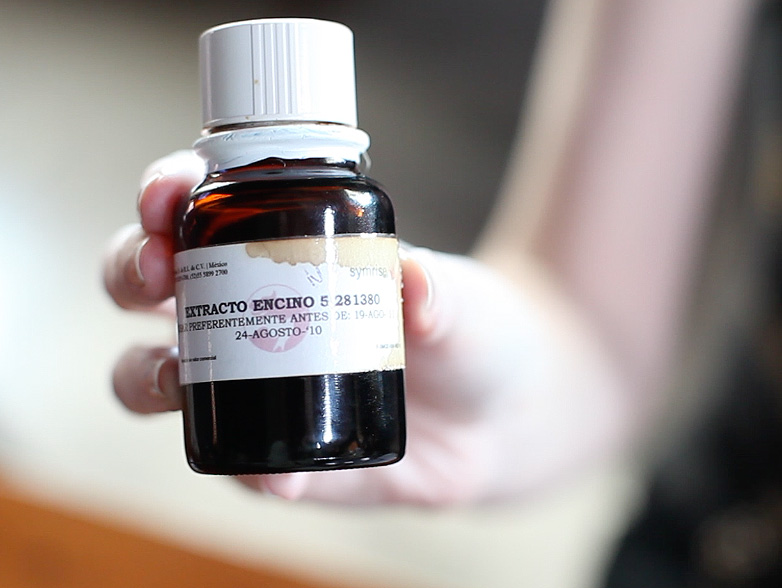
Diffuser-made tequilas have an additional reliance on additives for two main reasons. First, they tend to use younger agaves that have not fully matured. And second, the aromas and flavors that come from the traditional cooking process are not developed. These are two of the main reasons are why diffusers produce a more neutral spirit. The naturally-occurring aromas and flavors are lost.
“To make up for that loss in the process, I think that additives are heavily used to bring back the flavors and the nuances that tequila has naturally in a process that has not been respected completely,” Mendoza said.
So, is it possible for a distillery to produce a variety of aromas and flavors without using additives? Mendoza says, “yes.”
According to him, the Tequileña distillery (NOM 1146) does not need to use additives in order to create different flavor profiles. Instead, they can make adjustments to the process in a way that can achieve their flavor profile goals. For example, blending batches of tequila made with a copper pot still with another batch from a column still, or using agaves grown in different elevations or in different soil types.
Products made with a copper pot still tend to have a bolder, more rustic feel. They create an oily texture that can have aromas and flavors of mint, olive, and brine.
A column still will bring a crispy dry vibrancy to the finished product, and showcase green agave aromas and flavors. This is useful when looking to produce a softer, more dry and refined tequila.
Since Tequileña has a variety of equipment on site, they are able to create new flavor profiles by using different equipment, and by blending batches together.
“We have created an alphabet of base tequilas,” Mendoza said. “We can use certain qualities of a batch of tequila and play by blending with other qualities to obtain what we want. In that way our ‘additives’ are 100% agave tequila of different characteristics, from which we compose our specific profiles for each brand.”
Mendoza says that they use both subjective and objective tests to verify a flavor profile. This is done first by smelling and tasting a batch of tequila, and taking notes of what they think is present. Secondly, these findings are checked through the use of Gas Chromatography, which provides an objective chemical readout of what’s creating those profiles that we humans may refer to as “pear” or “oregano”, for example.
This process represents an admirable dedication to the art of creating a diverse, natural range of tequila aromas and flavors, but not all producers take this approach. Some stick to cooked agave, water and yeast alone and let their process and terroir dictate the results. Others take a more active approach in manipulating their tequilas through the use of additives. This is legal and not necessarily bad, but for tequila purists it’s worth learning the difference.
Additives in Tequila: A Conversation
Sergio Mendoza, of Don Fulano Tequila, and Clayton Szczech, of Experience Tequila, talk about the use of additives in tequila.
Want additive-free tequila? Try these:
-
Tequila Fortaleza
Gran Dovejo
Terralta
Don Fulano
Siembra Valles
And finally, here’s the full list of verified additive-free tequilas on Tequila Matchmaker.
How is this information verified?
When a brand claims “no additives”, we won’t list it as such in our database until we personally verify their production process.
You can see the details of this process in our story: Our Additive-Free Tequila Verifications Program: The Details
The list in the Tequila Matchmaker is updated constantly as we gather new information and verify new distilleries and brands.
Can cheating still occur? Probably. But we’ve done our best to come up with a verified list of additive-free tequilas that rely on more than just marketing claims.
If you are a brand or distillery owner and wish to go through our independent and confidential verification process, please contact us.
** – There are some confusing rules in the NORMA that appear to allow the use of additives in a blanco. In the 2012 NORMA, section 4.36.1 says that blanco tequilas should be “sin abocante” (without additives). However, section 6.1.1.1 states that the products defined in 5 sections, including 4.36.1, allows for “edulcorantes, colorantes, aromatizantes y/o saborizantes permitidos por la Secretaría de Salud” (sweeteners, coloring, aromas and flavors allowed by the Health Secretary.)


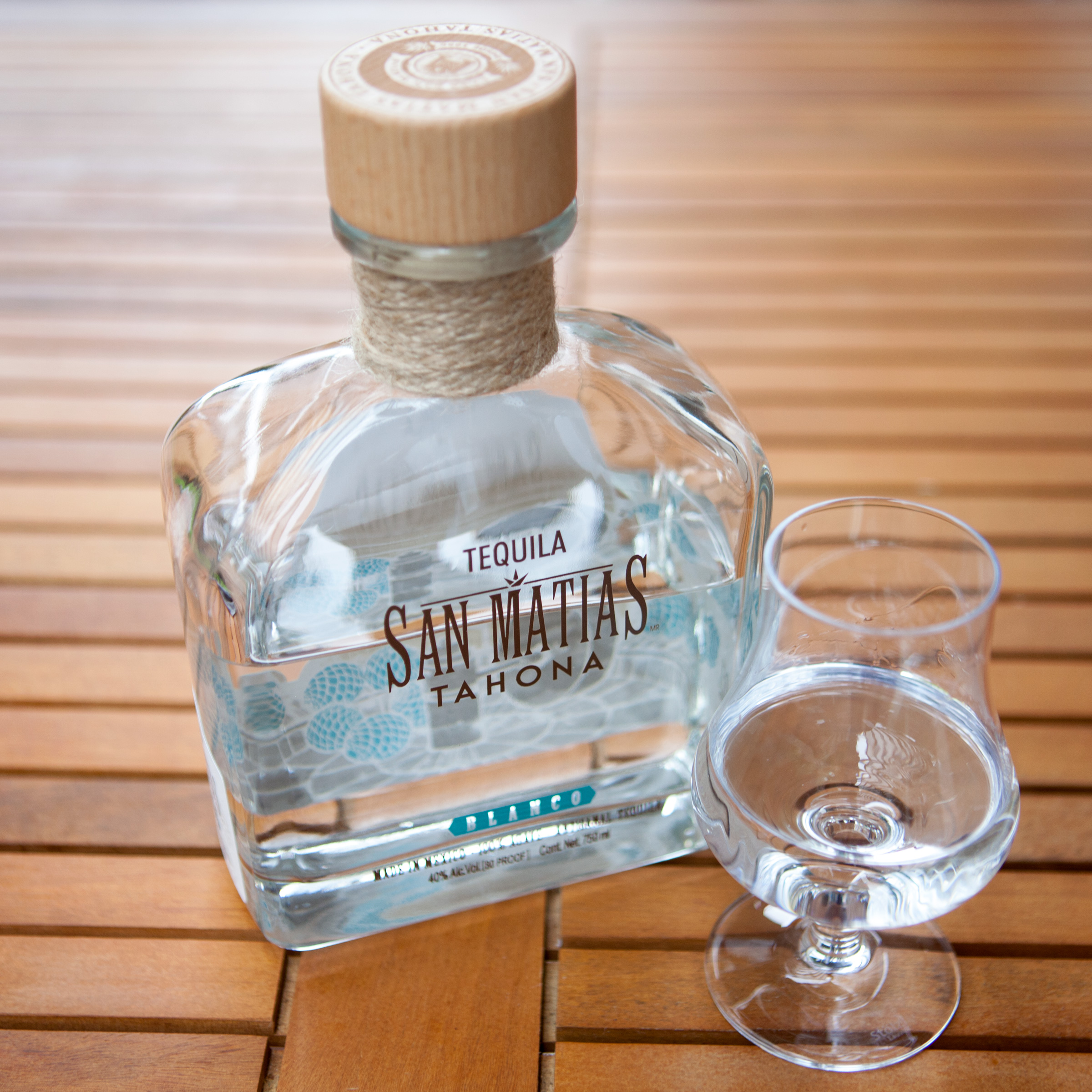
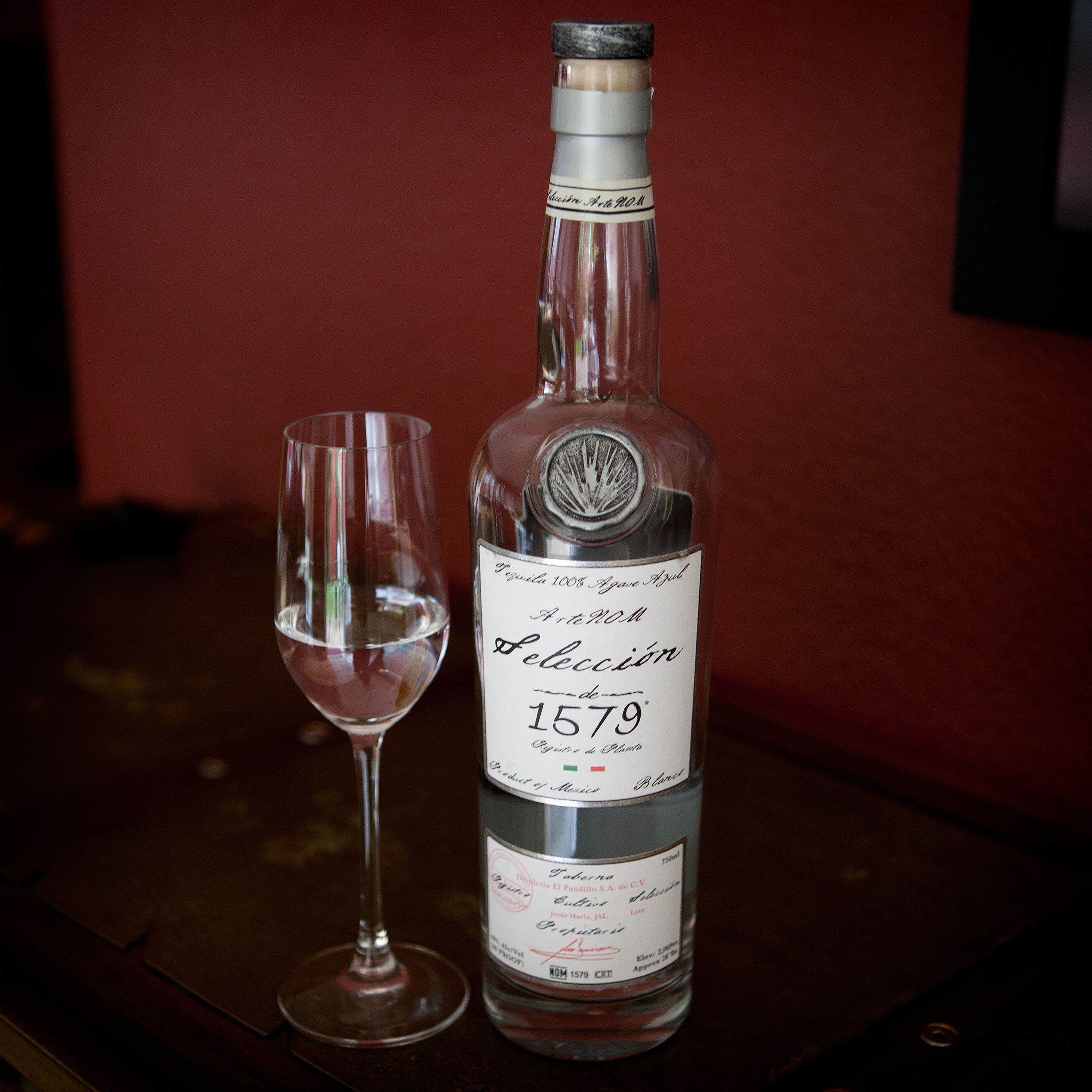
FANTASTIC…LOVE IT
Great article guys.mvery informative. If a brand ambassador claimed their tequila is additive free would you believe them?
Maybe. We would, of course, use the Tequila Matchmaker app to see if those claims lined up. But the best thing to do is smell and taste it first. We’ve noticed that brand reps don’t always know what’s in their product, or the details of how it was made, so they aren’t always a very reliable source of that level of information.
Knowledge // Honesty
My friend Grover, just to clarify information in your video….
Putting additives to the tequila blanco is not against the rules. It is one of the two options to produce joven tequilas.
The rest of the information is, as always, perfect!
There are vague areas of the Norma that make it difficult to determine the true intent, and this is probably by design. We based that statement off of the article posted by Clayton Szczech (linked in the text), that the CRT clarified that no additives were allowed in blancos. Yet, the vague rules remain on the books. It is my hope that a new version of the Norma will clear this up. And thanks for chiming in! It’s an honor to have you.
As you say, the NOM is confussing but without looking for clarity in the Norma we can conclude that… blanco can’t have additives, but if you put additives in the blanco, then it becomes a joven.
You can check that in the 4.36.2 of the NOM.
Lets see what happens in the new NOM about this.
And by the way, thanks for the great effort you are doing spreading the correct knowledge of tequila. I enjoy your work so much.
Thanks once again Grover and team. For me this was a thoroughly entertaining and informative article. You consistently deliver the tequila goods :)
Keep up the good work, your efforts are greatly appreciated, salud.
Ps All credit goes to any and all tequila producers that take pride in their workmanship and craft.
Grover, thanks for your own great presentation on the flavoring/rectificating process and rationale. With the link Including the video of Sergio Mendoza, of Don Fulano Tequila, and Clayton Szczech, of Experience Tequila . . . you have it all covered in width and depth. Thanks much.
Great to hear Sergio give an informed comment on this subject. Great job Clayton and Grover
Hey Phil, I’m not sure you are aware, but you were at the distillery while we were shooting that video. :-)
hey there, I dont have a smart phone by choice. but Im wondering if I can download the tequla matchmaker app for my pc?
thanks for the very informative content on this site, great stuff.
We are working on a website version of the app, which should be finished soon!
Are blanco brands that used additives before they were disallowed grandfathered in to their old recipes? Or were the required to adapt to the new regulations?
Excellent read, as usual. As a newbie to but lover of tequila, I am so appreciative of this insight. The spirit world is as diverse in opinion as it is in choice–tequila is no different, but respectful discussion and enthusiasm for the craft, the trade and consumer awareness means everyone benefits.
I have a hard time believing additives are not used in blancos. This undermines the CRT authority because 2 tequilas come to mind that if I put the blanco in front of even non-tequila drinkers, they could tell right away that it tastes like candy in the tequila. There is no way that is happening in the natural fermentation process. I am so glad to see transparency being written about and discussed, but at this point, more still needs to be done.
Lamar – It’s absolutely happening, you’re right. They’ve found a nice big loophole big enough to drive a truck through, and nothing is being done about it as far as we can tell. The good news is that blancos with additives are easy to identify by aroma and flavor, so we avoid them. We also do our best to teach others how to detect them as well because, as far as we are concerned, it’s not real tequila.
Great article and video, very informative. Thanks so much. Clayton you probably mentioned much of what is said in the article and video when I did the tour with you but for some reason I can not remember. Was it just because it was so much fun or? Segio’s tour and hospitality was unforgettable though. Guess we will just have to come again.
Excellent article. Great work as always Grover!
Excellent and informative post and video. It was nice to see it was done at Tequilena where my fave and unsung hero , Cimarron is made. Yay ! No additives !!!
Excellent! five stars………….
Any news on what the new rules, current NOM, say about additives in Blancos vs. Joven Blancos? Since you have only a very small percentage of Tequilas in your ‘no additives’ list, this information could be very helpful. And if you already communicated this I am sorry. I did not find the information about latest developments of new norma on first glance.
Where can we get a list of companies using additives in anjeos?
That list doesn’t exist. Nobody ever admits publicly to using additives.